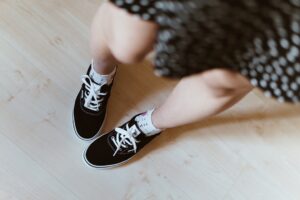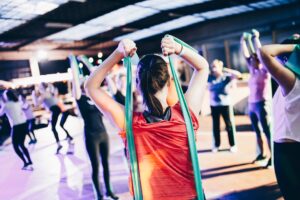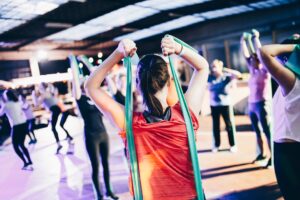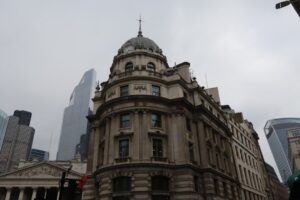Timeless 50s Women’s Fashion: Embracing Elegance and Sophistication
The 1950s marked a significant period in women’s fashion, characterized by post-war prosperity and a return to femininity. This decade saw the emergence of the iconic hourglass silhouette, featuring full skirts and fitted bodices. Christian Dior’s “New Look” revolutionized fashion, while Coco Chanel continued to influence women’s style with her timeless designs.
The era emphasized elegance and sophistication, with women embracing tailored suits and dresses that accentuated their curves. Luxurious fabrics such as silk, satin, and taffeta were widely used, contributing to the opulent feel of 1950s fashion. Accessories played a crucial role, with gloves, pearls, and hats becoming essential elements of a woman’s wardrobe.
Simultaneously, the 1950s witnessed the rise of youth culture and the emergence of the teenager as a distinct demographic. This led to the popularity of casual and sporty styles, including the introduction of capri pants, pedal pushers, and the classic white shirt. The shift towards more relaxed and practical clothing for everyday wear began during this period, while still maintaining an air of elegance and femininity.
The fashion of the 1950s reflected the changing social and cultural landscape, as well as evolving attitudes towards women in society. This era continues to inspire designers and fashion enthusiasts today, serving as a testament to its enduring influence on style and culture.
Key Takeaways
- 50s women’s fashion was characterized by a return to femininity and elegance after the austerity of World War II.
- The iconic silhouettes of the 50s included full skirts, fitted bodices, and emphasized waistlines, creating a timeless and flattering look.
- 50s fashion embraced femininity through the use of soft fabrics, pastel colors, and delicate details like bows and ruffles.
- Accessories played a crucial role in 50s fashion, with gloves, pearls, and cat-eye sunglasses adding the finishing touch to an outfit.
- The elegance and sophistication of 50s fashion continue to inspire modern styles, with many women incorporating vintage elements into their wardrobes for a timeless appeal.
The Iconic Silhouettes of the 50s
The “New Look” Revolution
Christian Dior’s “New Look” collection, introduced in 1947, revolutionized fashion by departing from the boxy and utilitarian styles of the war years. This iconic silhouette featured a fitted bodice, a nipped-in waist, and a full skirt that accentuated the hourglass figure. The “New Look” became synonymous with femininity and glamour, remaining one of the most iconic looks of the 1950s.
Timeless Silhouettes
The sheath dress, characterized by its form-fitting shape and knee-length hemline, was another popular silhouette of the era. This style was favored by women who desired a more streamlined and sophisticated look, becoming a staple in every woman’s wardrobe. The pencil skirt, which hugged the hips and thighs before tapering down to the knees, was also a timeless classic. This sleek and tailored style was perfect for both office wear and evening attire.
Casual Chic and Timeless Essentials
The 1950s also popularized casual and sporty styles that reflected the growing influence of youth culture. Capri pants, pedal pushers, and circle skirts were designed to be more practical and comfortable for everyday wear. These styles were often paired with fitted sweaters or blouses for a more casual yet polished look. The classic white shirt, introduced during this era, became a wardrobe staple for women of all ages. This versatile piece could be dressed up or down, making it a timeless essential in any woman’s closet.
Embracing Femininity with 50s Fashion

The 50s was a time when women fully embraced their femininity through fashion. The “New Look” introduced by Christian Dior celebrated the hourglass figure, with its fitted bodice and full skirt that accentuated the waist. This silhouette became a symbol of femininity and glamour, and it empowered women to embrace their curves and celebrate their bodies.
The use of luxurious fabrics such as silk, satin, and taffeta added to the opulence of 50s fashion, making women feel elegant and sophisticated. The emphasis on tailored suits and dresses also reflected a more polished and put-together look that exuded confidence and grace. Accessories played a crucial role in completing the feminine look, with gloves, pearls, and hats adding an extra touch of elegance to any outfit.
In addition to the more formal styles, the 50s also saw the popularization of casual wear that still maintained an air of femininity. Capri pants, pedal pushers, and circle skirts were designed to be more practical and comfortable for everyday wear, while still flattering the female form. These styles were often paired with fitted sweaters or blouses for a more relaxed yet still polished look.
The 50s also saw the introduction of the classic white shirt, which became a wardrobe staple for women of all ages. This versatile piece could be dressed up or down, making it a timeless essential in any woman’s closet. Overall, 50s fashion was a celebration of womanhood and a reflection of the changing roles and attitudes towards women in society.
The Importance of Accessories in 50s Fashion
| Accessories | Importance |
|---|---|
| Hats | Added elegance and sophistication to outfits |
| Gloves | Completed the polished look and added a touch of glamour |
| Pearl necklaces | Symbolized femininity and added a classic touch |
| Scarves | Added color and pattern to outfits, as well as warmth |
| Handbags | Practical yet stylish accessory that completed the ensemble |
Accessories played a crucial role in completing the iconic looks of 50s fashion. Gloves were an essential accessory for any woman in the 50s, adding an air of sophistication to any outfit. They came in various lengths and materials, from short cotton gloves for daytime wear to long satin gloves for evening attire.
Pearls were another staple accessory that added a touch of elegance to any ensemble. Whether worn as a necklace or as earrings, pearls were a timeless classic that complemented the feminine styles of the era. Hats were also an important accessory in 50s fashion, with pillbox hats and fascinators being popular choices for both formal and casual wear.
In addition to these traditional accessories, handbags played a crucial role in completing the overall look. Women carried structured handbags that matched their shoes or coordinated with their outfits, adding a touch of sophistication to their ensembles. Scarves were another versatile accessory that could be worn around the neck, tied in the hair, or even used as a belt to add a pop of color to an outfit.
Overall, accessories were an integral part of 50s fashion, adding an extra layer of polish and refinement to every look.
Embracing Elegance and Sophistication in Modern Times
The elegance and sophistication of 50s fashion continue to inspire modern designers and fashion enthusiasts today. The iconic silhouettes such as the “New Look” and the sheath dress have been reinterpreted and reimagined for contemporary tastes, proving that classic styles never go out of fashion. Designers continue to celebrate femininity through their designs, with fitted bodices, nipped-in waists, and full skirts making frequent appearances on the runway.
Luxurious fabrics such as silk, satin, and taffeta are still favored for their opulence and timeless appeal. Accessories also play a crucial role in modern fashion, with gloves making a comeback on the runway as a statement accessory. Pearls continue to be a symbol of elegance and grace, adorning necklaces, earrings, and even clothing for a touch of old-world glamour.
Hats have also made a resurgence in modern fashion, with designers creating modern interpretations of classic styles such as pillbox hats and fascinators. Handbags remain an essential accessory for every woman, with structured designs adding a touch of sophistication to any outfit. Overall, 50s fashion continues to influence modern style with its emphasis on elegance and femininity.
The timeless appeal of this era’s fashion proves that embracing sophistication never goes out of style.
How to Incorporate 50s Fashion into Your Wardrobe

Feminine Silhouettes and Accessories
Embrace feminine silhouettes that accentuate your curves while exuding confidence and grace. Accessories are key to completing your 50s-inspired look. Invest in gloves that add an extra touch of sophistication to any outfit, whether it’s for daytime or evening wear. Pearls are a timeless classic that can be worn as a necklace or as earrings to add a touch of old-world glamour to your ensemble.
Essential Pieces for a Polished Look
Hats are another essential accessory that can elevate your look, whether it’s a classic pillbox hat or a modern fascinator. For more casual looks, opt for capri pants or pedal pushers paired with fitted sweaters or blouses for a relaxed yet polished ensemble. The classic white shirt is also a versatile piece that can be dressed up or down for any occasion.
Completing the Look with Handbags and Elegance
Structured handbags are essential for completing your 50s-inspired look, adding a touch of sophistication to your ensemble. Overall, incorporating 50s fashion into your wardrobe is about embracing elegance and femininity through timeless silhouettes and accessories that exude sophistication.
The Timeless Appeal of 50s Women’s Fashion
The 50s was a decade that celebrated femininity through iconic silhouettes and luxurious fabrics that exuded elegance and sophistication. The “New Look” introduced by Christian Dior revolutionized women’s fashion with its emphasis on the hourglass figure, while casual styles such as capri pants and circle skirts reflected the growing influence of youth culture. Accessories played a crucial role in completing every look, from gloves to pearls to hats.
The timeless appeal of 50s women’s fashion continues to influence modern style with its emphasis on embracing elegance and femininity through classic silhouettes and accessories that exude sophistication. Incorporating 50s fashion into your wardrobe is about investing in key pieces that capture the essence of this iconic era while embracing timeless classics that never go out of style. Overall, 50s women’s fashion remains an enduring source of inspiration for designers and fashion enthusiasts alike, proving that classic styles never go out of fashion.
Whether it’s through iconic silhouettes or timeless accessories, the elegance and sophistication of 50s fashion continue to captivate us today.
If you’re interested in learning more about 50s women’s fashion, you should check out the article “The Evolution of Women’s Fashion in the 1950s” on Ranvier Villamil. This article provides a detailed look at the iconic styles and trends that defined women’s fashion during this era, from the full skirts and cinched waists to the popular accessories and hairstyles. It’s a fascinating read for anyone interested in the history of fashion.
FAQs
What were the popular fashion trends for women in the 1950s?
Popular fashion trends for women in the 1950s included full skirts, fitted blouses, tailored suits, and dresses with cinched waists. Women also wore accessories such as gloves, pearls, and hats to complete their outfits.
What were the common fabrics used in 1950s women’s fashion?
Common fabrics used in 1950s women’s fashion included cotton, wool, silk, and synthetic fabrics such as nylon and polyester. These fabrics were used to create the structured and tailored look that was popular during the decade.
What were the popular hairstyles for women in the 1950s?
Popular hairstyles for women in the 1950s included the short, curly “poodle cut,” the bouffant, and the iconic “pin-up” style with victory rolls. Women also often wore their hair in ponytails or elegant updos.
What were the popular shoe styles for women in the 1950s?
Popular shoe styles for women in the 1950s included pumps with low, chunky heels, saddle shoes, and ballet flats. Women also wore pointed-toe stiletto heels for more formal occasions.
How did 1950s fashion for women differ from previous decades?
1950s fashion for women differed from previous decades in its emphasis on a more structured and tailored look. The hourglass silhouette, with a nipped-in waist and full skirts, was a defining feature of 1950s fashion, in contrast to the looser, more flowing styles of the 1920s and 1930s.
What were some iconic fashion icons of the 1950s?
Some iconic fashion icons of the 1950s included Audrey Hepburn, Marilyn Monroe, Grace Kelly, and Doris Day. These women were known for their elegant and sophisticated style, and their influence on 1950s fashion is still felt today.














Post Comment
You must be logged in to post a comment.